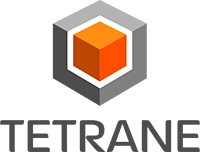Table of Contents
System requirement
Here are the mandatory technical requirements to run a REVEN server:
- an Intel(TM) CPU with VT-x extension, in x86-64 mode,
- a GNU/Linux Debian wheezy amd64 OS (English only),
- must be installed on a hardware host computer, it won't work inside a virtual machine,
- while it may work on recent basic computers/laptop for small projects, a dedicated server machine with high bandwidth RAM and high quality hardware RAID may be required for bigger projects.
The following points may be necessary to improve the REVEN server performance. Metrics are given for information only: they are an estimation based on the assumption of a single project consisting of a 1-second long scenario.
- The
/tmpdirectory should be mounted on a RAM filesystem with at least 4Gb available, - The
project_datafolder (see Build configuration) should be the on fastest storage possible (eg: avoid cyphering) and should have at least 200Gb available (for multiple projects, 1Tb is recommended).
Note that the version of REVEN-Axion you received may be specifically tailored to a hardware machine of which you would have provided characteristics. If that is the case, please install the REVEN server on this machine only.
To run the Axion client, the requirements are:
- you must install the client on a Linux Debian wheezy amd64 OS (English only),
- you can use a virtual machine to host the Debian system,
- you should have at least 1Gb of RAM,
- you must have a network access to the REVEN server and the following TCP ports must be accessible:
- 80 for package installation / upgrade,
- 8080 for the REVEN server itself,
- 13370 and up to at least 13375 (one per opened project),
- 5900 and up (depending on your user configuration) for VNC access while recording scenarios,
- 22 (default ssh) for tunneling VirtualBox manager X window when creating VMs.
Debian installation
In the following steps we assume the following configuration:
- a user named tetrane on the server,
- a root access (via root password or sudo rights) on both server and client machines.
Package repository registration on the server
REVEN is usually shipped as a compressed tar archive. To install it, first you have to extract the archive using the tar unix utility. We recommend storing REVEN packages in /home/tetrane/repo.
The following commands will extract a REVEN archive named reven-XXX.tgz (located in /home/tetrane/) to the /home/tetrane/repo folder. This should be ajusted to your needs.
# Ensure repository directory exist mkdir -p /home/tetrane/repo # Extract the reven-XXX.tgz archive located in /home/tetrane/ cd /home/tetrane/repo tar -xf /home/tetrane/reven-XXX.tgz
To be able to use the Debian package manager to install REVEN, you must register a new package repository. The recommended way is to create a /etc/apt/sources.list.d/tetrane.list file with the following content:
In the case of a local repository stored in /home/tetrane/repo:
deb file:/home/tetrane/repo/reven wheezy main deb file:/home/tetrane/repo/static_packages wheezy main
And then update the package database (as root user):
# Update available package database apt-get update
You can make sure your package configuration has been taken into account by issuing the following command:
apt-cache show reven-server
It should display information about this package.
REVEN server installation
Once the REVEN packages are available through the package manager, you can install the REVEN server.
As root user:
# Make sure the system is up-to-date apt-get dist-upgrade # Install reven-server apt-get install reven-server
At some point, the installer will ask for information about the new REVEN user, simply enter default choices (with <Enter>) and confirm with <Y>.
At the end of the installation you can check the REVEN service is running:
service reven-daemon status
To make REVEN start at boot, register it with the update-rc.d command (as root user):
update-rc.d reven-daemon defaults
Once REVEN is installed some more setup is needed before you can actually use it. Note that the installation process creates a user named reven. You should not use this this user for any operation on the machine.
Axion client installation
Now that you have installed the REVEN server software, it is time to configure the clients. All following commands will have to be issued on the client machine.
By default, the server installation you just went through will configure the machine to serve the client REVEN-Axion packages on an http server. Therefore, the easiest way to deploy the client is to configure the Debian client machine to use a new package repository by creating a file name /etc/apt/sources.list.d/tetrane.list with:
deb http://REVEN.server.host/ wheezy main
Of course REVEN.server.host should match the address or hostname corresponding to the machine you installed the REVEN server on.
Once Axion packages are available through the package manager, you can install the Axion client.
As root user
# Make sure the system is up-to-date apt-get dist-upgrade # Install reven-axion apt-get install reven-axion
Debian upgrade
To upgrade a previous installation of a REVEN server or Axion client, you must ensure the latest packages are available through the package manager: if you followed the recommended steps above, this means replacing the content of /home/tetrane/repo with the new packages. Then, simply issue the following command (as root user) on the server first, then on the clients:
apt-get update && apt-get dist-upgrade
